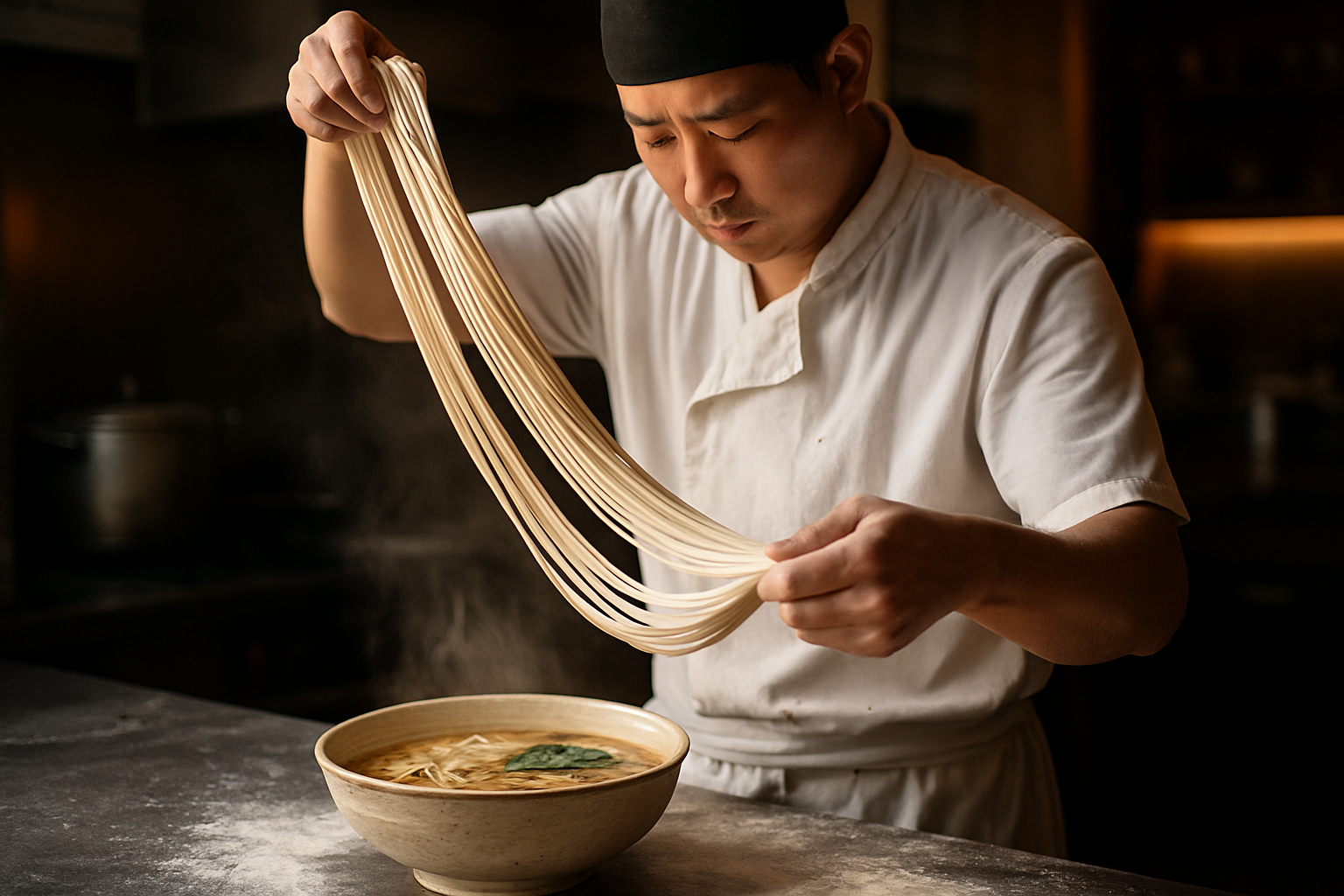Noodle Nirvana: The Art of Hand-Pulled Noodles
Slurp your way into a world of chewy, springy perfection. Hand-pulled noodles, a culinary marvel rooted in Chinese tradition, are taking the global food scene by storm. From street-side stalls to high-end restaurants, these artisanal strands are captivating taste buds and challenging chefs worldwide. Join us as we dive into the fascinating world of hand-pulled noodles, exploring techniques, flavors, and the cultural significance behind this time-honored craft.

As diners seek more authentic and artisanal dining experiences, hand-pulled noodles offer a perfect blend of spectacle and substance. The process of making these noodles is as much a performance as it is a culinary technique, with skilled noodle masters stretching and swinging dough in mesmerizing displays of craftsmanship. This visual appeal, combined with the superior texture and taste of fresh noodles, has catapulted hand-pulled noodles into the spotlight of global cuisine.
The Science Behind the Stretch
At the heart of hand-pulled noodles lies a fascinating interplay of gluten development and dough hydration. The key to achieving the perfect noodle lies in creating a dough with just the right amount of elasticity and strength. This delicate balance allows the dough to be stretched into impossibly long strands without breaking.
The process begins with a simple mixture of high-gluten flour, water, and salt. Kneading the dough activates the gluten proteins, forming a network that gives the noodles their characteristic chewiness. The dough is then rested, allowing the gluten to relax and the moisture to distribute evenly. This resting period is crucial for achieving the ideal texture and stretchability.
Mastering the Pull: Techniques and Variations
The art of hand-pulling noodles requires more than just recipe knowledge; it demands physical skill and intuition. Noodle masters use a variety of techniques to transform a single piece of dough into hundreds of uniform strands. The most common method involves repeatedly stretching and folding the dough, doubling the number of strands with each pull.
Regional variations in technique produce noodles of different thicknesses and textures. Lanzhou-style noodles, for example, are known for their incredible length and thinness, while Shanxi knife-cut noodles offer a thicker, more rustic texture. Some modern chefs are even experimenting with colored doughs, incorporating ingredients like beetroot or spinach to create visually striking noodle dishes.
From Bowl to Table: Serving Suggestions
Hand-pulled noodles shine in a variety of dishes, from simple broths to complex stir-fries. Traditional servings often feature the noodles in a clear, flavorful soup with tender beef or lamb. However, creative chefs are pushing the boundaries, incorporating hand-pulled noodles into fusion cuisines and unexpected flavor combinations.
One popular trend is the “dry” noodle dish, where hand-pulled noodles are tossed with bold sauces and toppings, allowing the texture of the noodles to take center stage. Spicy Sichuan-inspired versions feature numbing peppercorns and chili oil, while more delicate preparations might showcase truffle oil or fresh herbs. The versatility of hand-pulled noodles makes them an ideal canvas for culinary experimentation.
The Global Noodle Revolution
As hand-pulled noodles gain popularity worldwide, we’re seeing a fascinating fusion of cultures and cuisines. In New York City, ramen shops are incorporating hand-pulled noodles into their broths, while in London, pop-up restaurants are featuring hand-pulled noodle tacos. This global exchange is not only introducing new diners to the joys of hand-pulled noodles but also inspiring chefs to push the boundaries of traditional noodle-making.
The rising interest in hand-pulled noodles has also sparked a renewed appreciation for other artisanal noodle-making techniques. From Italian pasta to Japanese soba, there’s a growing recognition of the skill and craftsmanship involved in creating the perfect noodle. This noodle renaissance is encouraging diners to seek out authentic, handmade alternatives to mass-produced pasta, elevating the humble noodle to new culinary heights.
Noodle Know-How: Tips and Tricks
-
Always use high-gluten flour for the best stretching results
-
The ideal dough temperature for pulling is around 25°C (77°F)
-
Coating your hands with oil can help prevent the dough from sticking during pulling
-
The key to uniform noodles is consistent pulling speed and tension
-
Fresh hand-pulled noodles cook much faster than dried varieties, often needing only 1-2 minutes in boiling water
A Taste of Tradition, A Glimpse of the Future
Hand-pulled noodles represent more than just a culinary trend; they embody a living tradition that continues to evolve and adapt. As we celebrate the skill and artistry behind these incredible noodles, we’re also witnessing the birth of new culinary traditions. Whether you’re slurping them from a steaming bowl of broth or twirling them with exotic sauces, hand-pulled noodles offer a tangible connection to centuries of culinary history while pointing the way towards exciting gastronomic innovations. So the next time you encounter a bowl of these stretchy, chewy wonders, take a moment to appreciate the craft behind each strand – and then dive in for a truly unforgettable noodle experience.





